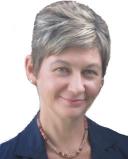Decision-Making
Independent Journalist Opts Out of Screening Mammograms
Evaluation of risks, benefits, and possible screening outcomes leads to "no."
Posted December 15, 2014

Independent journalist Christie Aschwanden recently explained in the Journal of the American Medical Association that she decided (without the help of her doctor) to opt out of screening mammograms, not just in her 40s but indefinitely, a decision that is becoming more common.
What prompted the journalist's decision?
Aschwanden describes a scenario in which soon after her 40th birthday, her gynecologist handed her a mammogram prescription. The order came without explanation of why the test was needed, what the doctor (based on her clinical experience) expected to find, a discussion of possible screening outcomes or best and worst case scenarios, or what would happen if she didn't have the test. Having read every major study published on screening mammography during her career as a science writer, Aschwanden had questions and reservations the clinician did not want to discuss. Left to her own devices, she ultimately made her own informed decision. She said, no.
In a detailed explanation, she shares the evidence she used to think through the possible outcomes of screening as well as the risks and benefits of screening given her specific health status, family history, and risk profile. She articulates five possible screening outcomes.
- Finding of no cancer; gives some assurance, but no certainty since about 27 percent of cancers appear between screens.
- Callback for further testing or biopsy; known to increase stress and anxiety. Annual mammograms beginning at age 40 would give her a 50/50 chance of such false alarms over the next ten years.
- Finding of an indolent lesion that would not cause symptoms or become life threatening in a person's lifetime; leading to additional surveillance, anxiety, and most likely some kind of treatment. About 30 percent of breast cancers (stage 0 and early invasive) are considered to be overdiagnosed and overtreated.
- Finding of an aggressive breast cancer that would progress regardless of treatment, ultimately ending in death. The chance that a mammogram would prevent someone from dying of breast cancer (absolute death rate) is less than one half of 1%.
- Finding of a dangerous cancer that responds well treatment. Screening mammography has only marginally reduced the rate at which women present with advanced cancer.
Possible outcome #5 is what spurs the desire for screening both on the part of many doctors and patients. Despite this belief, there is a very low probability that a screening mammogram will actually prevent someone from dying from breast cancer. The most recent clinical trial with 25 years of follow-up found no reduction in breast cancer deaths due to screening for women in their 40s or their 50s. Studies suggest that quality treatment is responsible for a reduction in the overall breast cancer death rate. Yet the author's gynecologist told her to get a mammogram at age forty because it could save her life.
What this Problematic Doctor-Patient Interaction Illustrates about Patient-Centered Care
In the wake of changing medical protocols about a variety of tests and medical interventions, the Aschwanden case illustrates the complexity of informed medical decision-making within the context of doctor-patient interactions. Shared decision-making is a fairly recent hallmark in the history of modern medicine and a cornerstone of patient-centered care, which requires patient preferences and values as well as sound evidence and effective communication. In this case, the clinician thwarted communication such that neither the patient's preferences nor the evidence amassed about mammography screening entered the equation.
Instead, Aschwanden weighed the evidence herself alongside her preferences and values.
After examining the data on screening mammography and considering the chances of missed cancers, callbacks and biopsies, the harms associated with being diagnosed and then treated for abnormalities or cancers that would never have surfaced without the test, the probability that the screening test (if it found something) would fail to lower her chances of dying from breast cancer anyway, and the physical, emotional and economic impacts of each scenario, Aschwanden made the decision to opt out of screening mammography unless and until compelling evidence arises that demonstrates greater benefit than harm.
As a journalist with a strong background reading and writing about medical studies, she was in a position to use her knowledge to make an informed decision. She also found a new doctor. But what does this mean for people who are not well versed in the language of randomized controlled trials, confidence intervals, and risk profiles? The common recommendation that women talk with their doctors and make an individualized, informed decision is not always easily attainable.
Dr. Gayle Sulik is the author of Pink Ribbon Blues: How Breast Cancer Culture Undermines Women's Health. More information is available on her website.
© 2014 Gayle Sulik, PhD ♦ Pink Ribbon Blues on Psychology Today
--
Related Articles:
- Amy Robach Story Spreads Heartfelt Misinformation by Gayle Sulik, Psychology Today, Dec. 10, 2013.
The Mammogram Myth, Alive and Well on “Good Morning America” by Gayle Sulik, Psychology Today “Essential Reads,” Nov. 14, 2013. - Time to debunk the mammography myth – by Gayle Sulik and Bonnie Spanier, CNN, Mar. 18, 2014
- Canadian National Breast Screening Study – by Bonnie Spanier and Gayle Sulik, Breast Cancer Consortium Research Brief.


